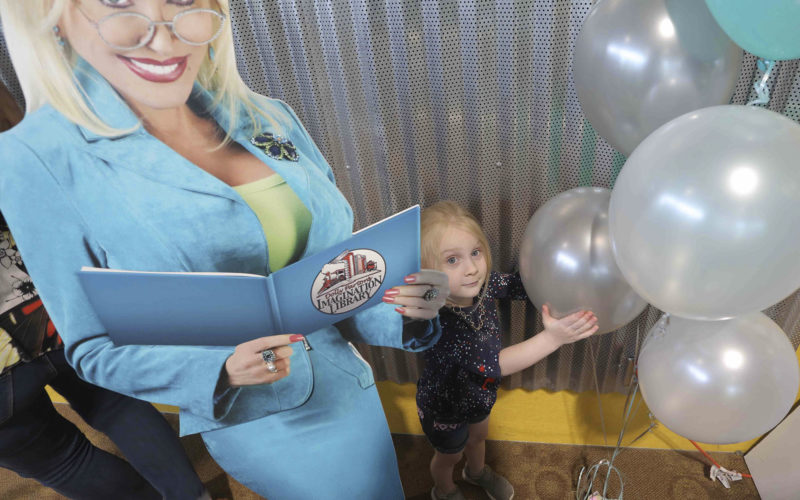Finances drying up, a study finds
Bill Bowden
Special to The Free Weekly
Many Arkansas nonprofits are struggling, according to a new study.
One respondent said she needed grants to pay for people to write grant proposals: “You need money to get money.”
“It’s a chicken and egg,” said Sarah Kinser, chief program officer for the Arkansas Community Foundation in Little Rock. “I think the main takeaway is that many Arkansas nonprofits are telling us they’re operating in survival mode to provide services that are vital to people in every community in this state, which makes them very vulnerable to shifts in funding.
“We have to invest in strengthening these organizations in order to see a greater impact on the many needs — hunger, literacy, health, job skills, etc. — they’re working to address.”
But if people in the community are in dire need, that’s where the money will go first, before it’s invested in operations and staff, said Kinser.
“Diminishing donor bases” and a lack of staffing have made fundraising more difficult, according to the study, which included online survey responses from 441 of Arkansas’ 14,227 registered nonprofit organizations.
The study was conducted by Communities Unlimited of Fayetteville and paid for by The Arkansas Community Foundation, Carl B. and Florence E. King Foundation of Dallas, and Winthrop Rockefeller Foundation of Little Rock.
“Funding from state and federal governments has decreased, and changes in the tax code are squeezing corporate giving,” according to a “letter from the funders” that was included in the study.
Kinser said it’s not clear yet how a change in tax law will affect charitable donations this year.
“Nonprofit organizations in our state are surviving, but not thriving,” according to arkansasimpact.org/arkansas-nonprofit-market-study. “To get stronger, they need the resources to invest back in their own organizational development — to hire and pay qualified staff, develop effective fundraising and communications initiatives, and plan for the future.”
In their letter, the funders wrote that donations with “strings attached” hamstring nonprofits. Some donors don’t want their money going toward salaries for staffers at nonprofit organizations.
“Limited funding for nonprofits is further limited by the requirements and ‘strings attached’ to grants and donations invested in programs while starving leaders and crippling organizations,” according to the funders’ letter. “Nonprofits need general operating support. They need investment in staff and leadership. They need sustained, long-term investment that allows them to move beyond a survival mentality.”
According to the study, the ability to pay competitive wages was the primary staffing challenge reported for 2012-16 in a national study. Many Arkansas nonprofits operate with volunteers only.
“I would say that I think the study confirms a lot of the things we are seeing, and similar studies have been conducted nationally,” said Kinser.
“The number of U.S. households giving to charity has significantly dropped, from 66.2 percent in 2000 to 56 percent giving in 2015,” according to the Arkansas study, citing a study by Indiana University’s Lilly Family School of Philanthropy.
“Government agencies have recently accounted for 29 percent of nonprofit funding, but federal and state budgets are being reduced for programs nonprofits are expected to deliver,” according to the Arkansas survey, citing two studies — “An overview of the nonprofit and charitable sector,” a 2009 report from Congressional Research Service and “State budget crises: Ripping the safety net held by nonprofits,” a 2010 report from the National Council of Nonprofits.
Leaders of nonprofit organizations in Arkansas reported pulling people up out of poverty. But as some were lifted up, others fell into the mire.
According to the survey, “The following quote reflects the most common sentiment: ‘For every person we help escape poverty, two more come right in behind them.’”
“It’s hard to change the circumstances that made this person need us in the first place,” said Kinser.
Donations to nonprofits fluctuate with the economy, and the economy is doing well by many measures.
“But there are more and more nonprofits,” said Kinser. “There’s more competition on the landscape.”
In fiscal 2017, the Arkansas Community Foundation received $53 million in contributions and gave out $23 million in grants. The foundation had total assets of $335 million last year.
MaryAnne Williams of Des Arc is president of the nonprofit Margaret Fisher Literacy Challenge Inc. and coordinator for Imagination Library of Prairie and Woodruff Counties, a program that gives free books to children.
The nonprofit’s goal is to raise $15,000 each year to pay for books that are sent to children through Dolly Parton’s Imagination Library program. A child can receive a free book every month from birth until age 5. The nonprofit has to raise $25 per year per child in addition to keeping a database.
“’Llama Llama Red Pajama’ is a really hot book right now,” she said.
Williams said she has 62 donors in the two counties, and most of them give annually in the $100 to $300 range.
Williams said she has lost six volunteers in Woodruff County.
“We don’t have paid staff,” she said. “It’s not like I can fuss at somebody for not giving me their spare time.”
“The biggest challenge is always consistent, sustainable funding,” said Williams. “You can always get one-time funding. It’s having a sustainable base of people who care about whatever it is you’re raising money for. That’s the challenge.”
Under a section called “Possible next steps,” the study suggested dividing Arkansas into five regions, then promoting collaboration to “create peer-to-peer learning opportunities” within regions. Some functions, such as human resources and accounting, could be shared by nonprofit organizations within a particular region.
Another suggestion in the study was that nonprofit organizations work together on fundraising tools and to reduce competition among nonprofits within a particular region.
Kinser said that will require an adjustment because some of these nonprofit organizations have been competing for donations.
Another issue was grant writing.
“A common theme was that [nonprofit organizations] need skilled grant writers in addition to staff skilled in fundraising,” according to the study, noting a lack of funding for grant writers.
“If I could find someone to write grants, even someone I could train, we could look for more funding,” said one respondent. “But I don’t have the funds to hire/train that person.”
“’Investing in strengthening organizations’ includes staffing and leadership development, absolutely,” said Kinser. “But it also includes things like strategic planning, marketing and communications, technology, evaluation (to assess whether the program is working and how to make it more effective), financial management, and even very basic things like facility maintenance. Organizations that have a strong infrastructure are better equipped to make real, positive change in the communities they serve.”
The study included all types of nonprofit organizations, geographically distributed around the state, according to the methodology section of the study.






